“I went to art school, so if I drew, I was generally better than most kids. However, I wasn’t really influenced by anybody to become a painter when I was young. I wasn’t really studying either; I was playing soccer in high school. But I soon realized that soccer wouldn’t bring me to college, so I chose art school and was accepted by chance. It was only later, around the age of 30, that I realized I was into art. I had done many part-time jobs, but none of them felt fulfilling. Art came about through a process of elimination. If art didn’t go well, it felt like nothing mattered in life. Those were the kind of choices I faced.”
Izumi Kato completed his studies at Musashino University’s Department of Oil Painting in 1992. Since the early 2000s, he has gained recognition as a pioneering artist, showcasing his work in exhibitions both in Japan and internationally. In 2007, he received a notable invitation to participate in the widely esteemed 52nd Venice Biennale International Exhibition, curated by Robert Storr.
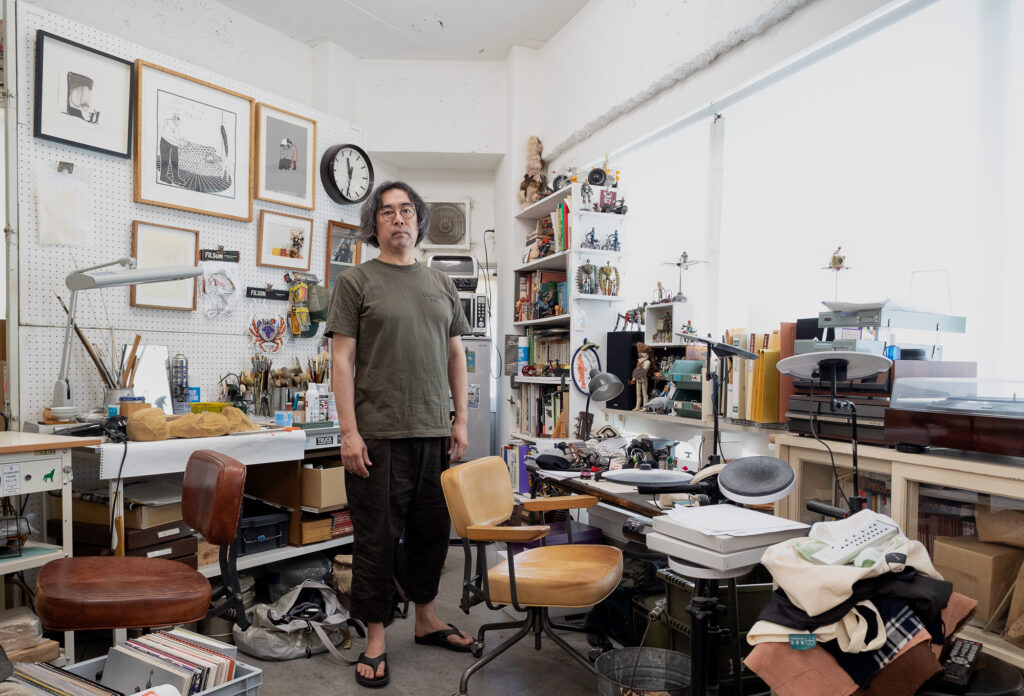
“I was a late bloomer, finding my true passion in art in my 30s (laughs). Unlike other pursuits, art never lost its appeal for me. I dabbled in it casually for years, always there in the background. Even if things didn’t work out, I knew I could fall back on a self-sufficient life in Shimane. So, I took a risk.”
Art in Japan is a small and tightly-knit community, almost like a subculture.
“Here, I don’t even refer to myself as an artist; I simply say I am self-employed. If you tell people you’re an artist, they often perceive you as strange. It gets a bit confusing because musicians are also referred to as artists. In other parts of the world, artists are considered separate from musicians. To make matters more complicated, I also play in bands and have long hair, so explaining myself to people becomes even more amusing (laughs).”
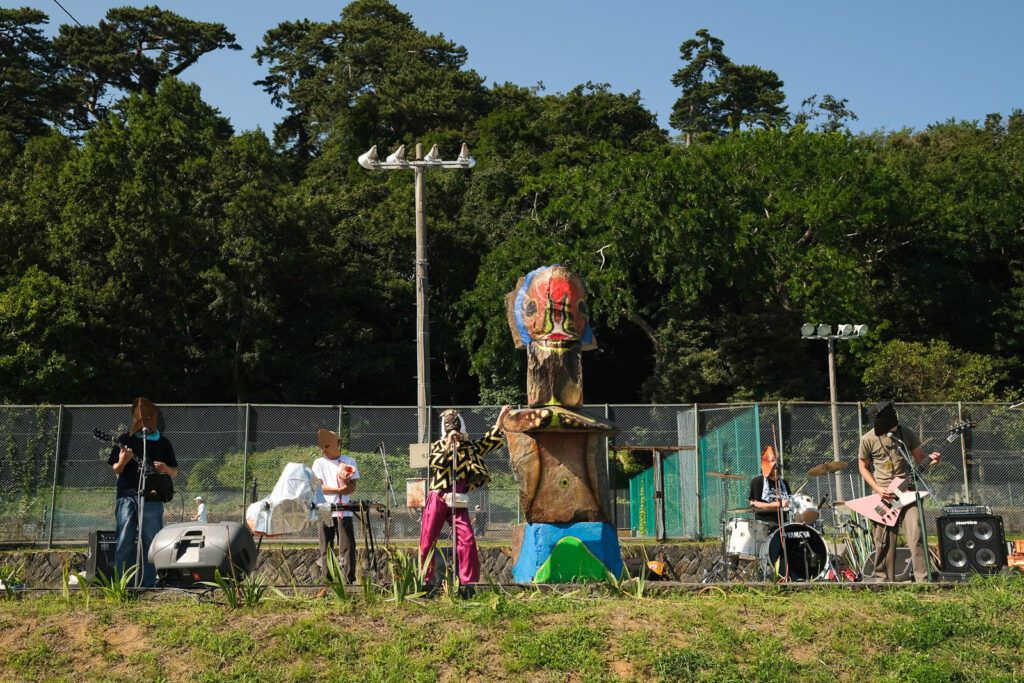
Live performance in front of Izumi Kato’s works at [Second Term]. 2022, Ishinomaki City
Photo: Yusuke Sato
Courtesy of POTZILAND RERCOREDS
©︎2022 THE TETORAPOTZ & SNATCH
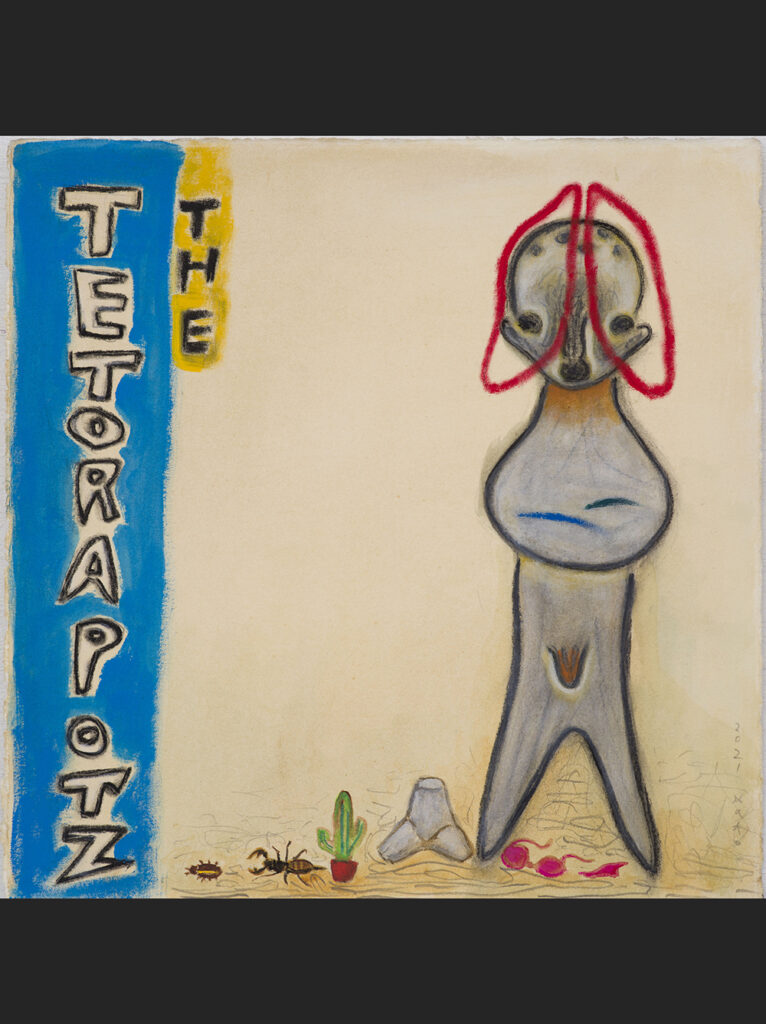
LP released in 2022
©︎2022 THE TETORAPOTZ & POTZILAND RECORDS
Izumi is also a drummer and runs a music label.
“During my student years, I played music and enjoyed it immensely. While I briefly considered pursuing it further, circumstances led to my fading desire, as music relies heavily on collaboration. One of my friends Atsuo from that time went on to become a musician in a band called BORIS, performing in the US and Europe. Recently, we reconnected, and he mentioned still having some of the original scores. Now, as I pursue my desired path, I’ve started a band with my artist friends called “TETORAPOTZ” purely for fun, not as a professional endeavor. Music brings me joy and has a more immediate impact than art, but for some reason, I couldn’t fully dive into it. As a self-taught drummer, I enjoy playing without focusing on perfection. Occasionally, I watch tutorials on YouTube to expand my skills.”
“In terms of art, I graduated from school but mostly focused on music during that time. It wasn’t until my 30s that I seriously considered art and explored various supplies and techniques on my own. My artistic journey was more do-it-yourself (DIY) rather than formal art school training. As I delved into my own art, I studied art history and found resonance with artists like Van Gogh and Cezanne. Understanding their artistic processes helped me comprehend their approach. However, my musical journey took a different path, leading me to believe that I had a stronger inclination towards art than music.”
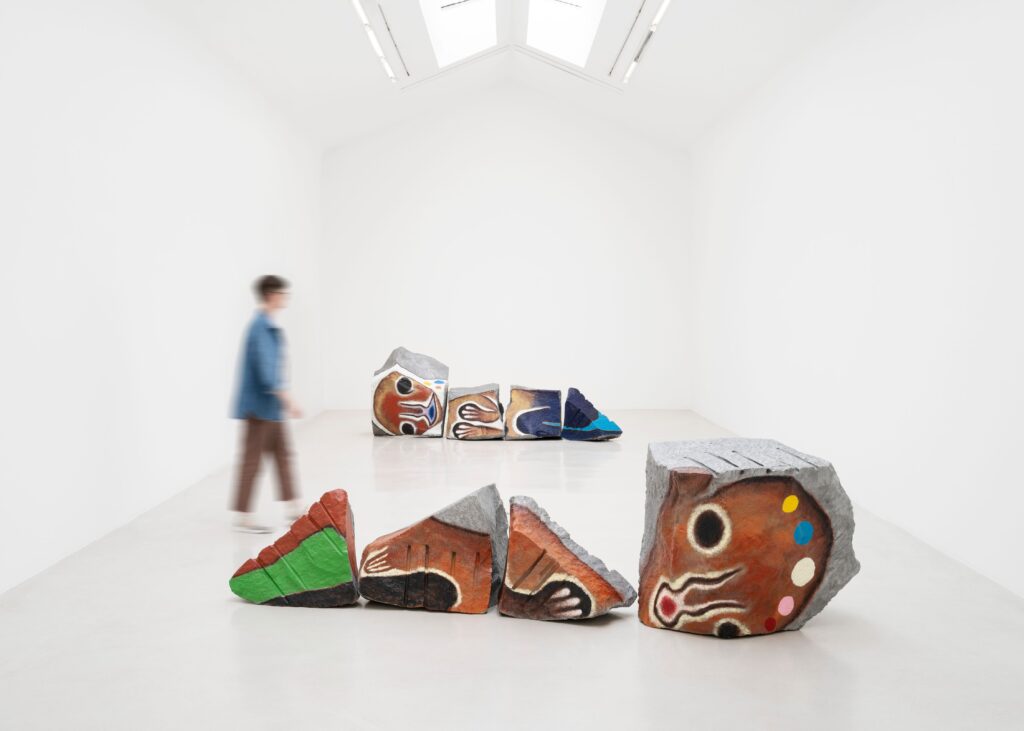
Photo: Clair Dorn
Courtesy of the artist and PERROTIN
©︎2023 Izumi Kato
Kato believes creating art and formal education don’t always align. True, authentic art requires originality and a unique perspective. Teaching someone to copy a style lacks originality. Artists must embark on their own journey of personal expression. Similarly to sports, art requires practice and skill refinement. Unique art isn’t solely based on talent or ideas; a holistic approach is necessary.
“I think back to my thirties and realize that during that time, I was constantly contemplating my life and what I wanted to pursue. It was during this period that I made the decision to become an artist. Even when I’m not actively creating art, my mind is always occupied with thoughts about it. My journey has a unique origin because I dedicated so much time and effort to reach a point of clarity. I pushed myself into a corner where the decision became clear: “NO ART, NO LIFE.” I take great pride in this decision, and that fundamental aspect of myself has remained unchanged.”
After leaving his previous gallery, Kato had no representation for a period of time until a gallery in France Perrotin approached him with a collaboration offer. Embracing new opportunities, Kato decided to work with them, and their partnership has been fantastic ever since. Initially, he joined Perrotin in Hong Kong, their sole location in Asia at the time. Since then, Perrotin has expanded to include Shanghai, Seoul, Tokyo, and other cities.
Kato feels Japan can be excessive in terms of societal pressures and a tendency to conform. There’s a strong peer pressure to say “yes” in many situations. However, the art world and art buyers operate on a different scale, where Japan seems relatively small compared to the rest of the world, especially the influence of American culture on Japan. It is worth noting that this observation doesn’t imply a dislike for the United States, just an observation. On the other hand, Japan has wonderful aspects. The hospitality in hotels and restaurants is exceptional, with a strong emphasis on quality and durability. People are generally honest and kind. It’s important to appreciate both sides of the different cultures.
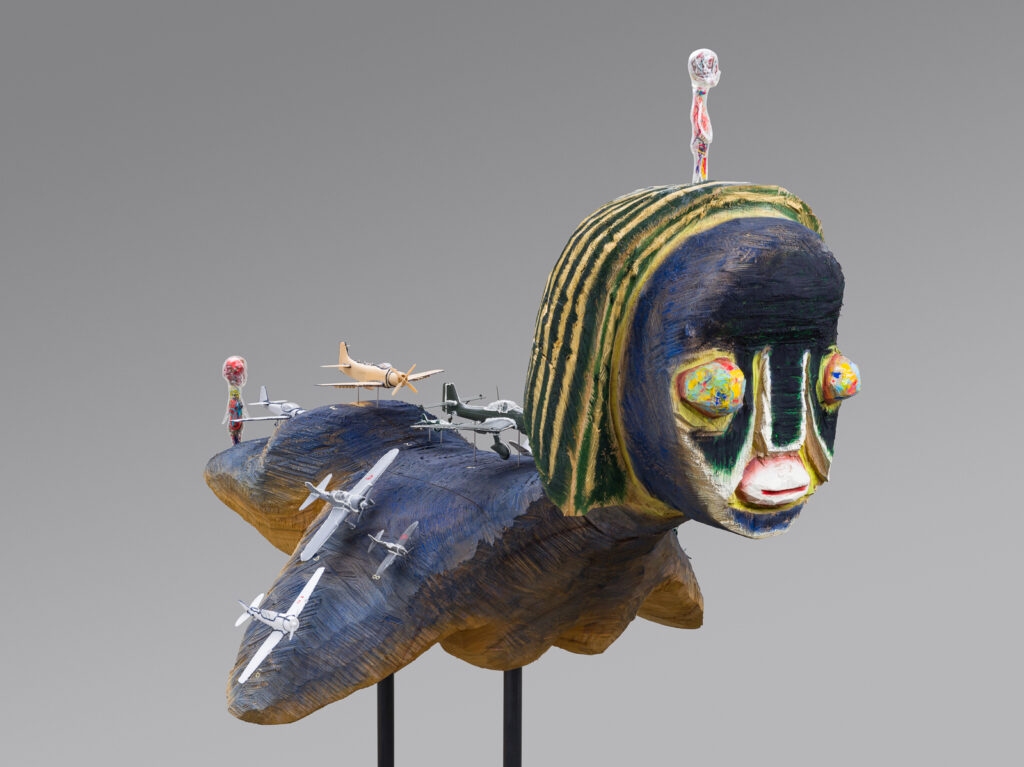
148 x 135 x 76 cm / wood, acrylic, plastic model, soft vinyl, steel
Photo: Kei Okano
Courtesy of the artist
©︎2021 Izumi Kato
“One reason art in Japan isn’t widespread is the difficulty of making a living from it. With its small size, there’s less opportunity compared to other countries. The concept of contemporary art isn’t widely taught, and there’s an expectation that value will spontaneously emerge. Artistshave social status and art seen as a business elsewhere, but not in Japan. Consequently, there’s little effort to develop it, resulting in frequent failures. Rather than creating their own appreciation and value, people often imitate successful examples.”
Japanese culture is facing many challenges due to a declining population. With fewer professionals and experts in various fields. This trend may contribute to a decline in culture, not only in Japan but worldwide. When culture declines, it affects people’s lives, as culture is intricately linked to our sense of identity and well-being. I asked what Japanese traditions meant to him and his work.
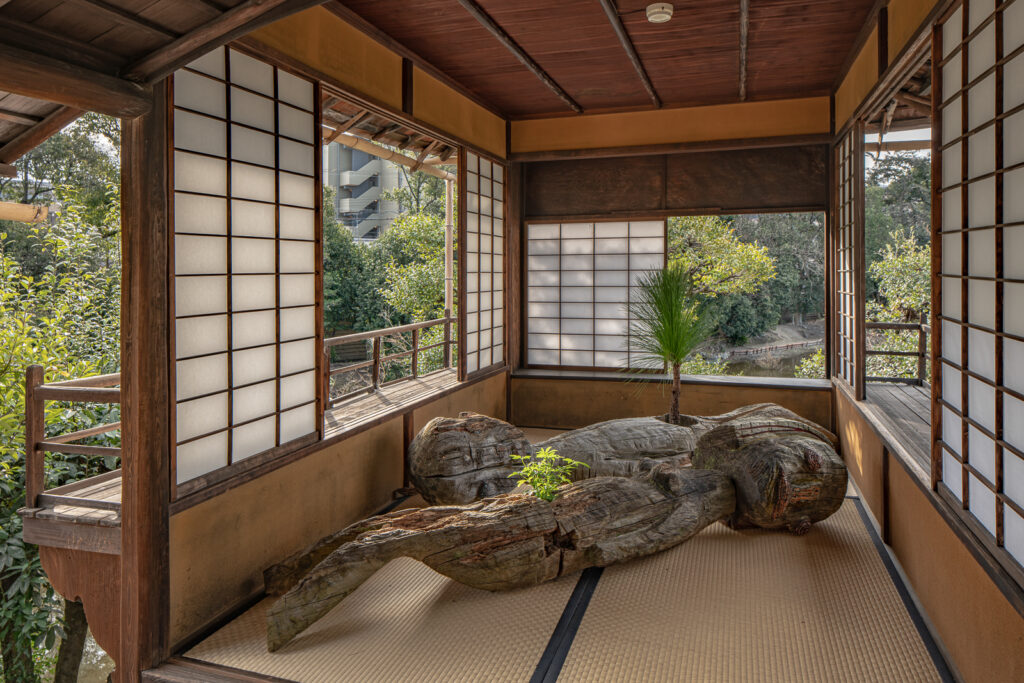
Photo: Kenryou Gu
Courtesy of the Artist and ARTSTS’ FAIR KYOTO Organizing Committee
“In Kyoto, I have friends from long-established stores who possess a deep appreciation for both the past and the future. Unlike Tokyo residents, they embody a remarkable blend of historical contemplation and forward-thinking. This youthful energy creates a vibrant atmosphere that nurtures art. With a small place there now, I frequently visit Kyoto for work and leisure.”
“Japanese art, particularly from the pre-Edo period, has always fascinated me. It possesses a unique interpretation of the world, distinct from Chinese ink paintings. This artistic sensibility feels ingrained in me, almost like it’s a part of my DNA. Working abroad has only solidified this realization, as I’ve come to appreciate the stark differences between Japanese and Western art. Ture essence for me lies in grasping the ideas and motives of artists like Van Gogh or Jakuchu and expressing them in a personal, unique way. I prioritize this individualistic approach over academic artistry, believing that everyone should embrace it by focusing on underlying concepts and personal expression.”
Yasuyuki Takagi
Yasuyuki Takagi is a photographer / director born in Tokyo, Japan. He studied Media Arts at Pratt Institute in Brooklyn, New York and lives and works in Tokyo, Japan.He has published photo books “小さな深い森 Petite Foret Profonde” and ”植木 UEKI” both from France and his latest project “マロニエ Marronnier” was shortlisted at the 50th ARLES international photography festival. His directing works includes: “How to be like Tom Sachs” “A portrait of a Place: Arakicho” amongst others.











